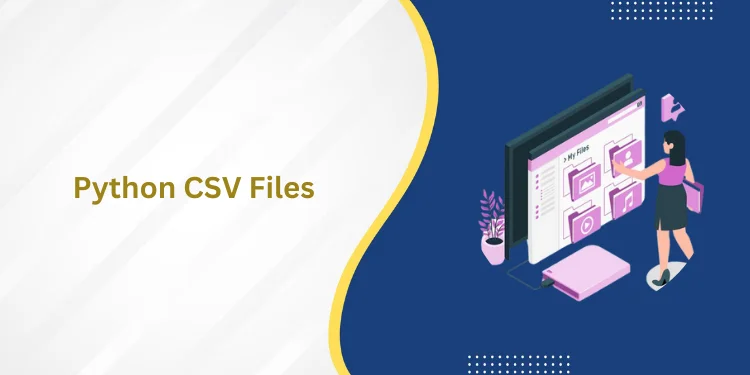Introduction
When managing data, computers use a set of instructions known as “data transfer instructions.” Data transfer instructions allow the computer to move data between various storage locations, such as registers, memory, and I/O devices like keyboards and monitors. As you work with these data transfer instructions, it is important to understand the various aspects involved in this process.
Data movement is at the heart of data transfer instructions. This involves moving the data from one storage location to another, much like moving furniture from one room to another. Similarly, in a computer system, you must consider where you want your data stored for it to be accessed properly. For example, suppose you are working with limited memory space available for registers or other storage locations. In that case, your choice of data storage could impact performance.
The size and type of data being moved should also be considered when using data transfer instructions for register transfers or memory access. Different registers have different amounts of storage capacity available and may accommodate different data sizes (e.g., 8bit or 16bit). Understanding how certain operations affect these considerations (e.g., stack operations) helps optimize performance when transferring data between two locations. Additionally, understanding offset addressing modes allows more precise control over how the processor handles these operations involving moving code and/or data elements around memory space.
Finally, these should also be considered when dealing with interruptions and input/output (I/O) instructions related to I/O devices such as keyboards and monitors (or other peripheral devices).
Types of Data Transfer Instructions

Data transfer instructions are among the most important operations used in computing – they allow data to be copied, stored, and moved between various computer parts. This blog will explore some of the common types of data transfer instructions available.
One type of data transfer instruction is that which allows for copying data: when one piece of information needs to be moved from one place in memory to another, this type of instruction is used. Additionally, storing and loading memory can also be accomplished with appropriate data transfer instructions – these are used to take information from an input device and store it into memory or recall stored information back into memory.
Another common use for data transfer instructions is moving information between registers within a processor. Registers are special areas within processors that can hold small amounts of information quickly and efficiently; thus, when two registers need to communicate with each other or one needs to send information off to peripheral devices such as hard drives or keyboards, the relevant data transfer instructions must be used.
Two more specific types of data transfer instructions are direct addressing mode and indirect addressing mode – these refer to how the source and destination locations for data transfers are grasped. When programs use direct addressing mode when transferring data, the address itself is embedded within the instruction; conversely, when using indirect addressing mode the main instruction contains the address where additional instructions regarding moving the information can be found (the latter approach is often useful when dealing with large amounts of dynamic data).
Another useful type of instruction is displacement addressing mode; this allows programs to specify an offset that can be added onto a specific base address. This makes up will make up more complex access patterns possible, allowing programs to jump around specified.
Interested in data science in Kolkata? Here’s the best data science course in kolkata
Examples of Data Transfer Instructions

Data transfer instructions are an important piece of any software development project. They move data from one place to another, typically from memory to memory, register to register, memory to register, or register to memory. A commonly used data transfer instruction is the MOV (Move) instruction.
Let’s dive into a few more examples of data transfer instructions. Memory transfers move data between two areas in RAM (random access memory). Registertoregister transfers data between two separate registers in a processor, like a temporary holding space for values while they are being processed. Memorytoregister transfers move data from ROM (read-only memory) or RAM into processor registers. In contrast, register memory transfers go the opposite direction moving values out of processor registers and into RAM or ROM.
Understanding when and how to use different data transfer instructions is vital for efficient software development. Knowing the basics will help you write better code and save valuable time in the debugging process. With some practice and experience, you can master these instructions and use them to create complex programs!
Also, have a look at the best data science course in kerala
Advantages of Using Data Transfer Instructions

Data transfer instructions are an effective and advantageous way to manage data in a computer system. Using data transfer instructions lets you quickly and accurately move information from one location to another, allowing for improved system performance. Here are some of the key advantages of using these instructions.
1. Increased Speed
Data transfer instructions can significantly improve the speed of data operations. Moving large volumes of data quickly and efficiently saves you valuable time on tasks such as backups and migrations.
2. Reduced Memory Usage
Data transfer instructions require less memory than traditional coding. By reducing the memory needed for data operations, you can free up additional resources that would otherwise be used for other processes.
3. Improved System Performance
Data transfer instructions facilitate automation, allowing you to perform large-scale data transfers with minimal effort. This process also reduces the need for manual coding and complex logic statements, improving system performance overall.
4. Enhanced Data Communication
Using data transfer instructions facilitates communication between disparate systems and applications, enabling your organization to become more agile by leveraging existing resources more effectively.
5. Automated Handling of Large Amounts of Data
Data transfer instructions provide the capability to move large amounts of information without requiring manual intervention or programming expertise on your part, making them ideal for larger operations that involve multiple systems or applications accessing shared resources.
6. Accuracy & Precision
Data transfer instructions help ensure accuracy when transferring data between different applications or systems within your organization, as there is no need for manual entry or coding
errors in the process, which can cause problems down the line when dealing with sensitive information or financial transactions.
7. Reduces Coding Overhead & Complexity
Reducing coding overhead and complexity is essential to produce efficient, accurate data transfer instructions. By streamlining the coding process, companies can reduce time spent writing code and ensure the accuracy of their instructions. This can be accomplished through modular programming, which breaks down complex tasks into discrete components that are easier to manage.
Additionally, object-oriented programming techniques can help create reusable modules that can be applied across applications without needing to rewrite the same code multiple times. Furthermore, taking advantage of software development frameworks and libraries such as Java or Python allows developers to quickly build programs while relying on predefined functions rather than writing full code blocks every time. These methods all work together to improve efficiency and cut down on coding overhead while ensuring accuracy each step of the way.
Related Blog:
- What is Time and Space Complexity in Data Structure?
- What is Sorting in Data Structures?
Disadvantages of Using Data Transfer Instructions

Data transfer instructions are essential to modern computer programming that transfers data between different system components. While they allow us to move data efficiently and quickly, they also have drawbacks. This article will explore some disadvantages of using data transfer instructions.
Firstly, resource consumption is an inevitable consequence of using data transfer instructions. As data is transferred across components, memory and processor power are consumed in the process. When large amounts of data need to be transferred at once, such resource consumption can significantly increase and degrade performance.
Secondly, bandwidth limitations can prevent us from effectively utilizing data transfer instructions. If the available bandwidth between two components is limited or unreliable, it may be difficult or impossible to use these instructions to transfer large amounts of information. Additionally, timing issues can cause problems when utilizing data transfer instructions; if one component attempts to send or receive data before the other is ready, a bottleneck can occur and significantly slow down the process.
Thirdly, several security risks may be associated with using data transfer instructions. Network congestion can lead to delays during transmission as well as an increased risk that important information might become exposed or compromised during transit. Similarly, compressibility challenges may prevent us from compressing large chunks of data before transmission to reduce the size and make it more secure against malicious attacks; this may leave sensitive information exposed or at risk of interception by attackers.
Finally, protocol incompatibility and instruction overhead further add complexity to our use of data transfer instructions; if two different protocols are attempting to communicate with each other then compatibility issues can occur which will affect speed and performance;
Necessary Skills Required for Utilizing Data Transfer Instructions
Transferring data from one computer to another is vital for any organization, and the ability to utilize data transfer instructions optimally can make all the difference. To ensure successful data transfers, it’s important to understand the various data instruction types, memory access operations, software tools and other technological components involved.
When transferring data, there are typically two distinct instruction types – direct transfer instructions and program control transfer instructions. Direct transfer instructions are used when you need to move data between two specific locations in memory with no additional processing required. Program-controlled transfer instructions allow you to include additional processing operations during data movement.
You’ll need knowledge of memory access operations to use either type of instruction effectively. Knowing how your system’s specific memory access works is essential for creating efficient and error-free transfers. You’ll also want to familiarize yourself with assembler directives and register operations for accomplishing specific tasks during the data movement process.
Data type formats are important too, as different systems can require the different representations of the same information (i.e., a float on one system might be a double word integer on another). Choosing the right representation format for a particular system is important to ensure accuracy during the transfer process. Lastly, timing considerations should not be overlooked when working with data transfers — delays can cause problems with both directions of transmission — so it’s important to remain aware of potential delay factors as you construct your instructions accordingly.
Fortunately, modern software tools like Python and Bash can greatly simplify many aspects of utilizing data transfer instructions.
Best Practices For Working with Data Transfer Instructions
When working with data transfer instructions, there are several best practices you should consider to ensure the safety and smooth transfer of information. From security protocols to authentication coding standards and more, these best practices will give you the tools to create an efficient transfer process.
Data Safety
The first step should always be to prioritize data safety. This means following all local, state, and federal laws regarding data sharing and protecting the user’s privacy. Establish strong access protocols that limit who can access or move files in order to prevent unauthorized access or manipulation of data.
File Extensions
Knowing which file extensions are accepted for use in your data transfer instructions is important. This will help ensure that the instructions are followed precisely and that any files not accepted by the instructions are filtered out before being sent.
Authentication Coding Standards
Authentication coding standards involve establishing rules such as username/password requirements, limits on the number of failed attempts, code complexity requirements that include mandatory use of special characters or numbers, et cetera. These standards help protect the integrity of your data transfers and reduce the risk of malicious attacks.
Security Protocols
You should always adhere to industry-standard security protocols such as SSL encryption when transferring data between two or more systems. These protocols help protect sensitive information from being seen by unauthorized parties during transmission. Additionally, you should maintain records on who has authorized access and received files throughout the entire process for future verification purposes.
Network External Loaders
Network external loaders (NEL) are programs that allow a company’s internal network to connect with external networks when transmitting files securely over a network connection. This
technology is extremely important when dealing with large amounts.
Common Mistakes Made With Data Transfer Instructions
Regarding data transfer instructions, some common mistakes are often made that can negatively impact the entire process. If you want your data transfer instructions to be effective, avoiding these common mistakes is important.
One of the most common mistakes people make is misunderstanding the requirements of the data transfer instructions. Whether you’re dealing with incoming or outgoing information, it’s essential to be clear and concise on what exactly needs to happen for successful data transfer. Without clarity and accuracy, any confusion created could lead to costly errors in the instruction process.
Another frequent mistake with data transfer instructions is incomplete verification of incoming and outgoing data. This means ensuring that accurate information is received every time an action occurs during the transfer process and verifying that all outputted data is correct before being sent away. Neglecting this step can lead to incorrect interpretations that could cause further issues.
Authentication measures should also not be forgotten when dealing with data transfer instructions. All participants involved must have proper access rights so they can perform each task and effectively communicate within the process. Implementing authentication measures protects against any malicious activity or unauthorized personnel from attempting to access confidential information or corrupting files through malicious software or code injection attacks.
Furthermore, one must remain aware of potential security threats when transferring large quantities of sensitive data between stakeholders. Not only should there be heavy encryption applied on each file being transferred, but it might also be necessary to monitor certain flagged user accounts if they are suspected of acting out maliciously towards certain systems or networks.
Conclusion
When it comes to data transfer instructions, there’s a lot to learn. From transferring files between devices to developing sophisticated automated scripts, we’ve discussed various ways you can manage and transfer your data. To conclude our look at data transfer instructions, let’s review the main points and takeaways.
We started by introducing the subject of data transfer instructions and discussing some common tools used in transferring data, such as FTP, SFTP, SSH, and rsync. We then looked at some more complex scripts that can automate server file transfers. Finally, we looked at popular transfer techniques for devices like Dropbox and Google Drive.
Throughout this blog post, we have discussed several topics related to data transfer instructions — from basic concepts to advanced techniques — that should give you a solid understanding of how to move your data around efficiently. With this knowledge, you now have all the tools to create seamless and secure data transfer instructions for your unique requirements.
To summarize, this blog post has provided an overview of various methods and techniques for managing your data safely and efficiently using specific instructions. From FTP protocols to automated scripting and cloud-based storage solutions like Dropbox or Google Drive, these methods should ensure that your files are transferred quickly with no interruption or loss of information.
It is important to remember that when dealing with sensitive or confidential information, it is always best practice to encrypt your files before transferring them over insecure networks like public WiFi or open web servers.













